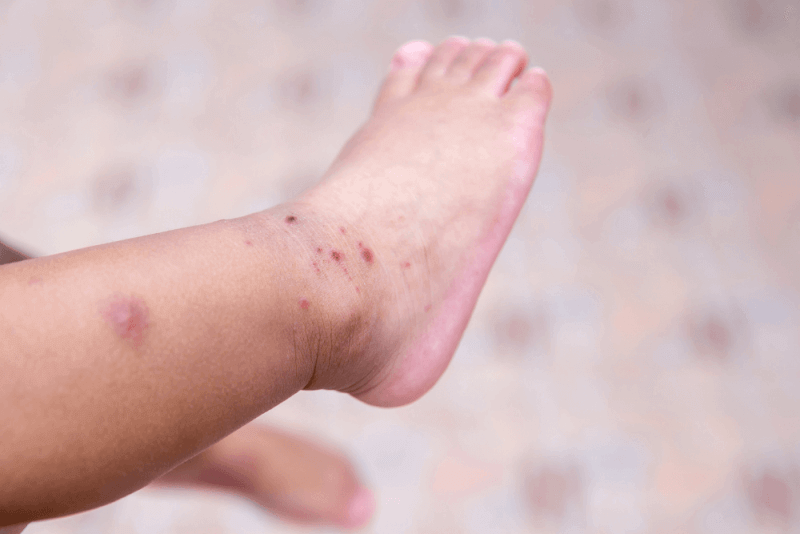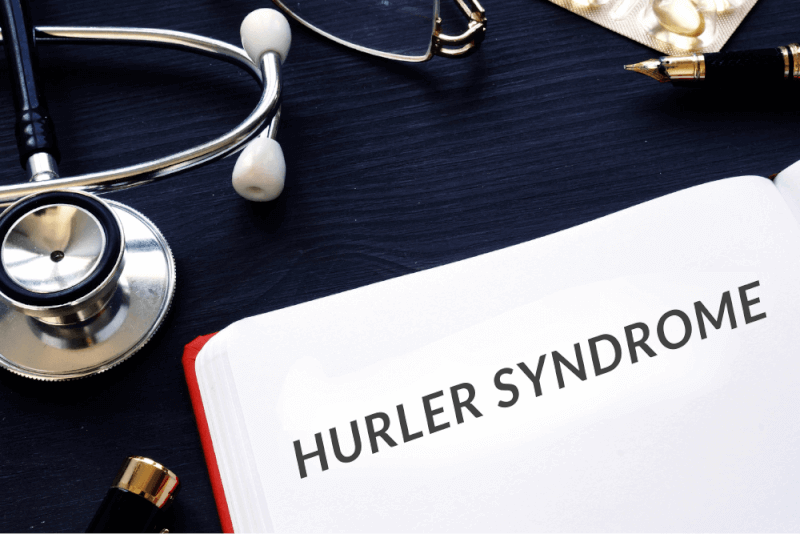What is Cerebral Palsy?
Cerebral Palsy is a disease that occurs in childhood. Cerebral palsy, a neurological disorder, occurs when the brain is damaged during development. The word cerebral comes from the cerebellum, the seat of motor functions in the brain. In developing children, cerebral palsy occurs as a result of underdevelopment or maldevelopment of the parts of the brain that control movement, proprioceptive sensation and the balance center. The course of cerebral palsy is not progressive, the patient's condition does not worsen as time passes.
Diagnostic Methods for Cerebral Palsy
Symptoms of cerebral palsy may not appear immediately. For this reason, the disease is not immediately recognized and diagnosed. The time to diagnosis varies according to the severity of symptoms. Patients with severe symptoms are diagnosed more quickly, while patients with mild symptoms take longer. The following methods are used to diagnose cerebral palsy:
- Brain Scans MRI scans are used to obtain a three-dimensional image of the brain. MRI scans use radio waves and magnetic fields to visualize lesions and damage in the brain. Cranial ultrasound uses sound waves to image the brain. Although the images obtained with this method are not clear, they can be used for preliminary diagnosis.
- EEG (Electroencephalogram): A method of detecting brain activity using electrodes. It is more efficient during epileptic seizures.
- Physical Examination Tests: These are tests used to measure the level of impact of the disease in children diagnosed with cerebral palsy. Physical examination tests are used to assess vision, hearing, speech, intelligence, development and motor function.
Symptoms of Cerebral Palsy
The symptoms of people with cerebral palsy vary according to the level of the disease. Most patients show marked loss of motor function. The main symptoms of the disease are:
- Spasticity and muscle stiffness
- Abnormal muscle tone changes
- Ataxia
- Tremor, involuntary jerky movements
- Slow movement
- Constantly using the right or left side of the body
- Difficulty performing fine movements
- Asymmetric gait, walking on toes
- Late age of starting to speak
- Difficulty speaking, stuttering
- Chewing and swallowing problems while eating
- Mental retardation
- Epileptic seizures
- Loss of hearing
- Decreased sense of vision
- Emotional instability
Patients may have all or some of these symptoms. It is also possible that children with these symptoms do not have cerebral palsy. Cerebral palsy can be suspected in babies under 6 months of age whose motor movements cannot be observed, if stiffness is felt in the body, if a cyst is felt, if the baby's legs become scissor-shaped when the baby is lifted in the air.
Causes of Serabral Palsy
Cerebral palsy is caused by lesions and defects in the brain. A lesion or defect in the brain can occur before, during or after birth. Damage to the brain can be caused by
- Genetic disorders as a result of gene mutations
- Infection of the mother during pregnancy and infection affecting the fetus
- Interruption of blood and oxygen flow to the brain in the womb, stroke
- Prenatal or postnatal brain hemorrhage
- Infection of the baby, especially near the brain
- Traumatic blow to the brain
- Decreased oxygen supply to the brain during labor
- Reverse birth, difficult birth
- Meningitis in mother or baby
- Premature birth, low birth weight
- Multiple births such as twins, triplets
- Using toxic substances such as smoking, alcohol, drugs during pregnancy
Cerebral Palsy Treatment Methods
There is no cure for cerebral palsy. But using the right methods, symptoms can be treated. Patients with cerebral palsy require lifelong care. As the disease affects many systems, it may require different treatments by different specialists. The following methods are used to treat the symptoms of cerebral palsy:
- Medication Therapy: In the treatment of cerebral palsy, medications can be used to reduce muscle tension, increase mobility, reduce pain and control symptoms. Medicines used in the treatment of cerebral palsy include:
- Muscle or nerve injections: Botox can be used to treat strained muscles. Injections need to be renewed every three months.
- Oral muscle relaxants: Drugs containing active ingredients such as baclofen, tizanidine, dantrolene and diazepam belong to the group of muscle relaxants and can be used to treat symptoms of cerebral palsy. In some cases, these medicines can also be taken intravenously.
- Therapies Different types of therapy are used to treat cerebral palsy.
- Physical Therapy: It is a method that can control most of the symptoms of cerebral palsy with special exercises and movement training. It should be done regularly and lifelong with expert guides.
- Occupational therapy: Efforts are made to help patients achieve freedom in their daily lives. This freedom is achieved by using appropriate equipment to reduce the symptoms of the disease. Examples include wheelchairs, crutches and walkers.
- Speech therapy: Speech exercises and training, sign language, hearing and speech aids are used to make life easier for cerebral palsy patients who have difficulty speaking.
- Sports therapy: Some sports such as horseback riding, skiing and swimming are used to improve the motor functions of patients.
- Surgical Procedures: It can be done to reduce muscle stiffness or repair bone anomalies.
- Orthopedic surgical procedures: Surgeries can be performed to restore patients' limbs and extremities to the correct shape. There are also surgeries to reduce pain and increase mobility.
- Selective dorsal rhizotomy: In advanced cases, in case of severe pain, the nerves innervating the muscle group causing the pain can be cut and the muscles can be numbed. This reduces the pain, but side effects such as numbness may also occur.
Exercises for Cerebral Palsy
People with cerebral palsy need to do some exercises throughout their lives. These exercises can prevent complications and progression of the disease. Exercise keeps patients moving, reduces depression and stress levels, prevents overweight gain, reduces musculoskeletal involvement and improves blood circulation. Since each patient's symptoms and degree of disease are different, it is necessary to prescribe patient-specific exercises. It is very important for the patient's health to exercise at regular intervals depending on the areas of involvement of the disease, accompanied by an expert physiotherapist. The most common exercises for cerebral palsy patients are the following:
- Joint rotation movements
- Calf stretching
- Quadriceps stretching
- Hamstring stretching
- Shoulder stretching
- Trunk tilt and twist movements
- Dancing
- Wheelchair pushing, aerobics, push-ups
- Resistance band exercises
- Weight lifting
- In-water exercises, swimming
Types of Cerebral Palsy
People with cerebral palsy are classified according to the degree of impairment of the main movements. Depending on the site and extent of the lesion in the brain, a patient may have several types of cerebral palsy. The types of cerebral palsy are:
- Spastic cerebral palsy
- Atenoid cerebral palsy
- Hypotonic cerebral palsy
- Ataxic cerebral palsy
- Mixed type cerebral palsy
Spastic Cerebral Palsy
The majority of people with cerebral palsy have spastic type cerebral palsy. Spastic cerebral palsy includes:
- Spastic hemipilegia: May involve the arm, hand or leg on one side of the body. Children walk later and walk on tiptoes. Some children have scoliosis. Generally, mental retardation and speech impairment are observed. The affected side of the body is less developed and weaker.
- Spastic diplegia: A muscle stiffness mainly affecting the legs, with less involvement of the arms, hands and face. The leg muscles and tendons are tense, the legs move like scissors. Mental retardation and speech impairment are usually not observed.
- Spastic quadriplegia: The most severe form of cerebral palsy. Moderate mental retardation is observed. Stiffness is seen in the extremities, the neck is drooping. They usually cannot walk or talk. They often have epileptic seizures and are difficult to control.
Atenoid Cerebral Palsy
In athenoid, also known as dyskinetic type cerebral palsy, patients have tremors of the extremities and limbs. Fine movements cannot be made using hands, arms and legs that are seen writhing and jerking movements. Atenoid cerebral palsy involving the face and tongue leads to speech and feeding disorders. Patients drool involuntarily and continuously because they have difficulty swallowing. Patients who have difficulty sitting upright or walking may experience loss of some senses.
Hypotonic Cerebral Palsy
It is a type of cerebral palsy resulting from a decrease in muscle tone. Reduced muscle tone leads to a softness in the body and the patient finds it difficult to move, often feeling unresilient. In the hypotonic type of cerebral palsy involving the central nervous system, patients have difficulty standing upright, their head constantly falls forward, they cannot walk, they have difficulty chewing and swallowing, and their reflexes become sluggish. There are different types of therapy to improve quality of life.
Ataxic Cerebral Palsy
It is a type of cerebral palsy that develops as a result of lesions in the balance center in the brain. Balance and sense of depth are affected. Proprioceptive sensation decreases or disappears. The patient cannot feel the position of their body and cannot balance with their eyes closed. Patients have a wide-based and asymmetrical gait. Fine motor skills are lost over time. They cannot acquire fine manual skills such as buttoning buttons or writing. Difficulty in performing voluntary movements.
Mixed Type Cerebral Palsy
Patients who have symptoms of two or more types of cerebral palsy and not just one of spastic, atenoid, ataxic or hypotonic cerebral palsy are classified as having mixed type cerebral palsy. The most common association is a combination of spastic-atenoid-hypotonic types.







